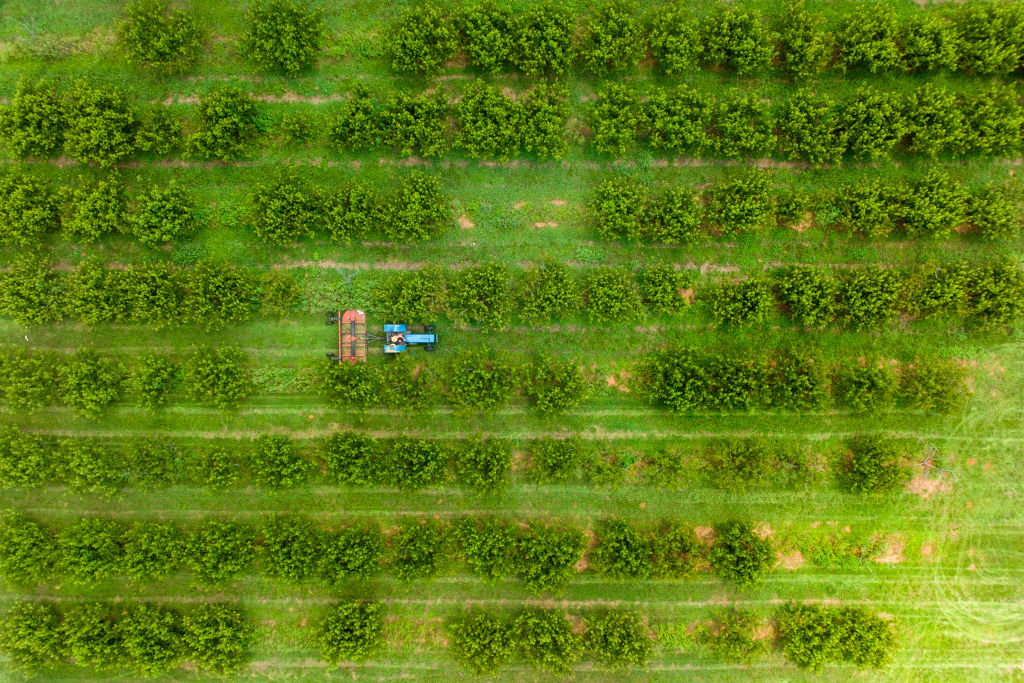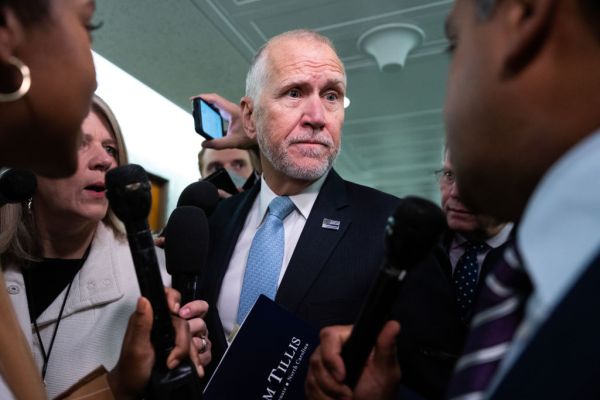Members of Congress headed back to their home districts for August recess last week, but the clock is ticking on several programs with multiyear authorizations expiring at the end of September.
Farm bill reauthorizations carry a hefty price tag: Republicans on the Senate Agriculture Committee estimated in May that this year’s bill could approve $1.5 trillion in mandatory spending over 10 years—though it’s hard to know in advance just how large that number will be.
Most of those mandatory dollars are entitlements, like Medicare or Social Security, which will vary depending on the number of recipients and how much they are owed. The CBO’s baseline projections for farm bill spending, which are adjusted each year, “can rise and fall over time based on changes in economic conditions, without action by Congress,” according to the nonpartisan Congressional Research Service. Lawmakers aim to make each new version of the farm bill budget neutral, offsetting anticipated spending increases with corresponding cuts somewhere else.
Despite its large size and scope, the farm bill tends to fly under the radar, partly by design. The first modern farm bill passed in 1933 as part of the New Deal, providing subsidies to support financially strapped farmers during the Dust Bowl and the Great Depression. For four decades, the bill primarily focused on these farm subsidies each time it came up for reauthorization.
But by 1973, Republican Sen. Bob Dole had realized that fewer Americans farming meant that support for farm subsidies in Congress could eventually disappear. Seeking to preserve them for his Kansas constituents, Dole worked with South Dakota Democrat George McGovern to include reauthorization for food stamps in the farm bill as well—creating the conditions for a bipartisan, rural-urban, farm-nutrition coalition that has been key to rallying support for each successive reauthorization.
Bringing nutrition assistance under the umbrella of the farm bill may not have made perfect sense as a policy matter. Doing so put “one of the largest welfare programs targeted to low-income families under the aegis of a secretary of agriculture,” Vincent Smith, director of agricultural policy studies at the American Enterprise Institute, tells The Dispatch. The practice is uncommon in other countries, but it was politically savvy in 1970s America.
Today, the farm subsidies are still around, and the food stamps program—now called the Supplemental Nutrition Assistance Program, or SNAP—comprises about 80 percent of mandatory farm bill spending. It’s “the elephant in the budget” for the Department of Agriculture, Smith says.
Since becoming an “omnibus” bill with the addition of nutrition assistance in 1973, the farm bill has only expanded. In addition to a projected $1.2 trillion for SNAP over 10 years, the 2023 baseline spending includes: $101 billion for crop insurance, $68.6 billion for “commodity programs” (loans), and $60 billion for conservation. Spending on crop research, energy, trade, and international development has also been added over the years. The modern farm bill has ensured predictability and bipartisanship in an era of partisan polarization—but in Smith’s view, it has also made it harder to pursue needed agricultural reforms.
According to his research, for example, the top 10 percent of farms by crop production—the very farms with the most resources in terms of net worth—receive over 60 percent of farm bill safety-net payments. Smith argues that’s a waste of finite resources, but farm businesses and their lobbyists are reluctant to support any move to cut spending.
Both parties are generally inclined to go along. Republicans see farmers as a critical constituency, and Democrats have invested political capital touting their support for SNAP and attacking Republicans for undermining it. (Some adjustments to SNAP that tightened partial work requirements while loosening others were already made as part of the debt ceiling agreement earlier this year.)
As a result, the legislative back-and-forth over this year’s farm bill has centered on relatively small-bore issues. Republicans, frustrated by the Biden administration’s liberal expansion of SNAP’s “Thrifty Food Plan” beyond what they say the 2018 farm bill anticipated, hope to establish guardrails around what the secretary of agriculture can and can’t do unilaterally. Sen. John Boozman, the ranking member of the Senate Agriculture Committee, has also said he won’t vote for a farm bill that doesn’t adjust reference prices to account for inflation. (The current references are based on 2012 data.)
To negotiate on those issues, lawmakers will need updated scores from CBO—and with limited floor time in September, the farm bill, like in 2018, isn’t expected to pass on time. In the interim, the U.S. Department of Agriculture will be able to continue most of its normal operations, a GOP aide on the Senate Agriculture Committee says.
But, “this is one of the last bastions of bipartisanship in Congress these days,” the aide adds. The farm bill’s eventual passage, it seems, is a foregone conclusion.









Please note that we at The Dispatch hold ourselves, our work, and our commenters to a higher standard than other places on the internet. We welcome comments that foster genuine debate or discussion—including comments critical of us or our work—but responses that include ad hominem attacks on fellow Dispatch members or are intended to stoke fear and anger may be moderated.
You are currently using a limited time guest pass and do not have access to commenting. Consider subscribing to join the conversation.
With your membership, you only have the ability to comment on The Morning Dispatch articles. Consider upgrading to join the conversation everywhere.